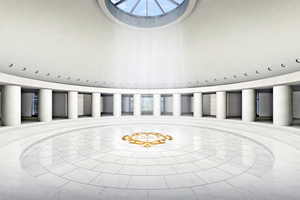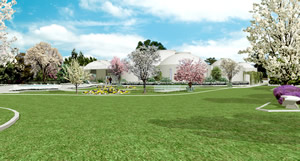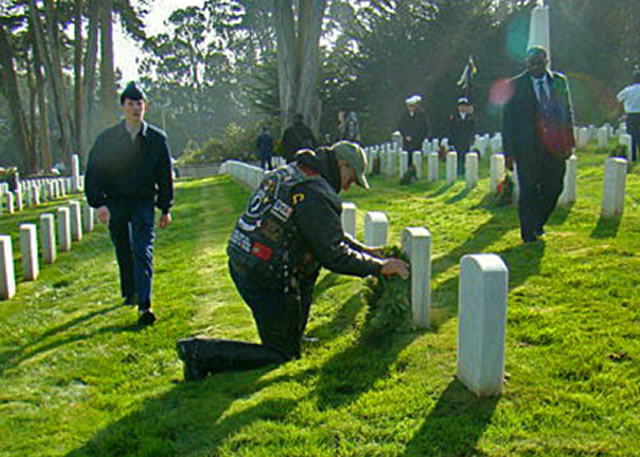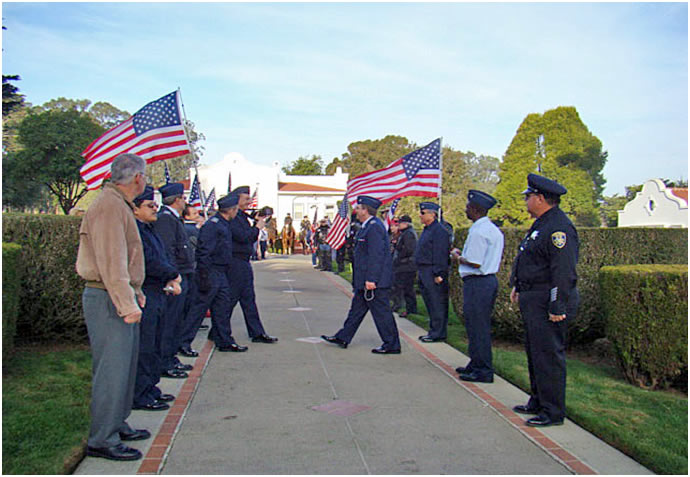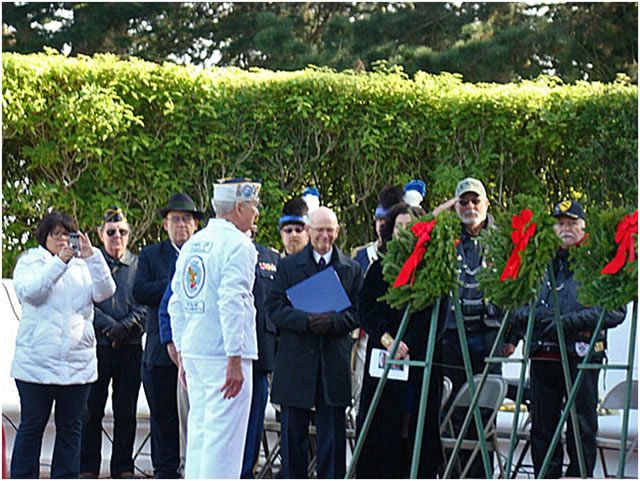Bay Area Interfaith Connect
Additional News Stories from 2012
- Successful Interfaith Cooperation
- NAIN 2012 Reflection
- 80 leaders attend ICP Conference:
"Understanding the Hidden Wounds of War" - Mormon Helping Hands
- A New Home for Sufism Reoriented
- ICP and Veterans
![]()
Successful Interfaith Cooperation
By Dr. Amer Araim
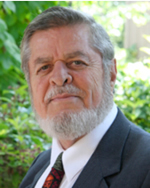
Dr. Amer Araim is President of the Islamic Community Outreach of
California, Member of the Executive Board of the Interfaith Council of Contra Costa County, and ICP Board Member.
A question is raised from time to time about the impact of interfaith cooperation on the members of our communities, and on the society as a whole. I believe that our cooperation is of great value to our communities as well as the society, and humanity at large. While we are disturbed and saddened by the attacks on the symbols of our faith, even by some people claiming that they are doing so in the name of religion, we should not be be divided but act in a cooperative fashion. Contrary to the attempts of those who try to provoke tension and mistrust through their campaigns, we should use wisdom and good words to convince our members and the society as a whole about the importance of our cooperation.
The freedom to practice our faith and the ability to help the poor and the needy in our society are more important than those voices that try to create division and conflict. In the meantime, we should highlight our successes. These are stories of our cooperation:
- During the recent visit of the leader of Myanmar Mrs. Daw Aung San Suu Kyi to the Bay area, there was a call to the faith community to convey a message of concern at the plight of Muslims in that country. While Ms. Kyi is not in government, she, as a political leader, was silent regarding the threats to expel Muslims from her country. The Interfaith Councils of Contra Costa County issued a statement demanding that there should be an end to the threats against Muslims in Myanmar. The Interfaith Council at the Presidio endorsed that statement. People of faith conveyed these concerns to Ms. Kyi, and she gave assurances that there would be protection to Muslims and all religious minorities in Myanmar.
- The other matter of deep concern was regarding advertisements that appeared on MUNI buses in San Francisco, which wrongly described the conflict in the Holy Land as a conflict between the "civilized" and the "savage." The ads infuriated not only Muslims, but people of other faiths as well. The Interfaith Council of Contra Costa County criticized the adds, and authorized its Executive Director to issue a statement and send a letter to the San Francisco Chronicle stating, inter alia, that:
“The troubling claim that the issues facing the peoples of the Holy Land is based on a conflict between the civilized and the savage is not only false dichotomy, it is an Islamophobic speech against all people of conscience.”
The Interfaith Council at the Presidio shared the concern expressed by the ICCC, and endorsed its statement.
The Muslim community in the Bay area wishes to convey its deep appreciation to the Interfaith
Councils of Contra County and the Presidio, and looks forward for continuing cooperation with both Councils, and the community at large.
NAIN 2012 Reflection By Vanessa Gomez Brake
From July 15 – 18, hundreds of people ventured to Atlanta, Georgia for the 2012 North American Interfaith Network – Connect. Hosted by Interfaith Community Initiatives and Faith Alliance of Metro Atlanta, the theme of this year’s gathering was ‘Creating Interfaith-Friendly Cities and the Beloved World Community.’
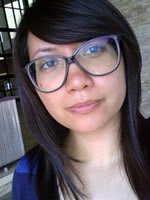
Vanessa Gomez Brake is a member of the ICP Board of Directors
In his welcome letter, Imam Plemon T. El-Amin spoke of Atlanta’s interfaith beginnings as being rooted in the Civil Rights Movement. “Dr. Martin Luther King, Jr. was inspired by mentors, Howard Thurman, Benjamin E. Mays, and Mordecai Wyatt Johnson to embrace the nonviolent philosophy of Mohandas Gandhi. Just as Gandhi was able to unite his Hindu community with Sikhs, Jains, and Muslims to liberate India, Dr. King united Protestants, Catholics, Unitarians, Jews and others across racial lines for the cause of freedom, human dignity, and “the Beloved Community.” Imam El-Amin was a gracious host, as he guided us through the city, on visits to the Martin Luther King Jr. National Historic Site, Ebenzer Church, Morehouse College, as well as the Atlanta Community Food Bank and The Carter Center. The NAIN Connect offered my first opportunity to truly see the city of Atlanta, and spend an extended period of time in the South. My experience in Georgia was unique. No amount of words can convey how moved I was, by simply exploring a city with such rich history, and engaging with/learning from interfaith leaders from throughout North America.
Someone once told me about the benefits of a broken heart. At the time of hearing this, I was skeptical. However, my interfaith and peacemaking work has helped me understand what this person was trying to explain to my naïve ears. When I think about Dr. Martin Luther King, I imagine what a broken heart he must have carried upon witnessing the inhumanity expressed during his time. In seeing, how the color of one’s skin could be used as an excuse for treating a person an ‘other’ and unequal. Yet despite this experience, his heart embodied a great love for all people, a sense of hope, and a dream for a better future. From this, he found the courage to transform his environment and the world. It was through darkness that he sought light.
Sometimes my own heart is broken, especially when brought face-to-face with the myriad of excuses humans continue to create to justify their cruel mistreatment of others. From this sadness, I have found myself in the field of interfaith peacemaking. While I can admit, interfaith work does not always engage my heart fully, there was however, one particular moment at the Atlanta gathering that had me close to tears.
A highlight of the Tuesday morning breakout sessions was a panel of Abrahamic leaders assembled for the topic of ‘Extending Bridges, Not Burning Them: Interfaith Dialogue on LGBT People.’ One criticism one might espouse is that the interfaith movement is not having enough ‘difficult dialogues.’ It can be utterly upsetting when interfaith-ers avoid challenging and divisive topics. For me, such activities are the very point of the whole interfaith movement: to facilitate authentic dialogue and action for a more peaceful and just world. Not only should faith communities collaborate for shared service, such as soup kitchens, building homes, etc…but they should engage each other in the type of discussions that will help them break down barriers and stereotypes. Building the type of beloved community Martin Luther King spoke of.
Such a criticism could not be launched against the NAIN Connect organizers, as this particular panel on LGBT issues offered articulate religious leaders, readily engaged in heated debate. What I loved about this session was that the speakers modeled a respectful form of engagement, despite a difference of position on the LGBT topic. While there was disagreement between them, and energetic exchanges, at no point did I feel tensions were high. The discussion that transpired between the panelists was something I am not often witness to. On the news, or other media outlets, I am used to seeing people offer diatribes on similar topics. The type of generative dialogue the interfaith panelists modeled for attendees was powerful. It is my hope that such civil discourse will be modeled more often for more audiences, as it is key to cultivating relationships that can transform our world.
I think the ‘difference without division’ they demonstrated was made possible in-part by the on-going, intentional relationship the religious leaders have carried on for many years. All three panelists were also past participants in World Pilgrims, ‘an interfaith effort to develop friendships among faith leaders through travel and exchange,’ led by Imam El-Amin. These interfaith journeys have taken Muslims, Christians and Jews to places such as Turkey, Morocco, Spain, Greece, Jordan, and Jerusalem.
Authentic dialogue between seemingly opposing parties, can help transform relationships and future joint endeavors.
I engage in interfaith work because it offers me hope when the state of world affairs continues to break my heart. By taking part in interfaith activities, I learn more about myself by learning about others. Such interactions allow me the opportunity to challenge my own biases. If we are to build the ‘beloved community,’ the interfaith movement should continue to challenge themselves and others to learn from difference, and explore the discomfort that comes from disharmony. And perhaps, this is why next year’s NAIN Connect theme will be: ‘In Diversity is Our Strength.’
See you in Toronto in 2013!
80 leaders attend ICP Conference:
"Understanding the Hidden Wounds of War"
On April 26 at the Orinda Community Church, 80 veterans and spiritual leaders gathered to hear veterans’ stories, dilemmas and concerns, and to consider together how Bay Area spiritual communities can most effectively welcome and support 21st century veterans and their families. More than ¼ of those present were veterans themselves, and many more were already working with veterans. The giving and receiving of knowledge and support among the people at this gathering was something to behold. They shared their stories, their tears, and their hopes for peaceful lives.
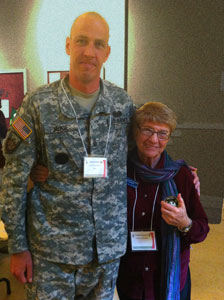 A highlight of the day came when one of the panelists, Command Sergeant Major McKie, presented Rev. Dr. Caroline Knowles, ICP Board member and leader of the “Beyond Memorial Day” project, with a Challenge Coin. Challenge Coins are a way to recognize an individual's outstanding achievement and dedication and she received this coin because of her unwavering focus to bring together the community to address healing Veterans’ spiritual injuries.
A highlight of the day came when one of the panelists, Command Sergeant Major McKie, presented Rev. Dr. Caroline Knowles, ICP Board member and leader of the “Beyond Memorial Day” project, with a Challenge Coin. Challenge Coins are a way to recognize an individual's outstanding achievement and dedication and she received this coin because of her unwavering focus to bring together the community to address healing Veterans’ spiritual injuries.
The conference was initiated by the Program and Veteran Committees of the Interfaith Center at the Presidio; John Young and Rita Semel, respectively, chairs of those committees. The leader for the project was Caroline Knowles. She has developed a chaplaincy for veterans both with ICP and with the Unitarian Universalist Church of Berkeley. They co-sponsored the conference with the Graduate Theological Union and the Interfaith Council of Contra Costa County. A special thank you goes to Thrivent Financial for Lutherans for their generous support.
Rev. Frank Baldwin of Orinda Community Church was a wonderful host. Command Sergeant Major Patrick McKie, Rev. Lyn Juckniess, Chaplain, and Christopher Loverro, Army Reserve Civil Affairs Staff Sgt. (retired) were the military panelists. Rev. Ed Hatcher, a retired Air Force Chaplain, Lutheran minister, and clinical counselor was the featured speaker. Dr. Michael Griffin, a psychologist at the VA and Dr. Roy King, a Stanford psychiatrist and professor, were the professional panelists. The featured speakers and individual participants both reached levels of honesty, truth-telling, and mutual concern and cooperation rarely achieved in one-day workshops. Although a clear majority of the participants were from the East Bay, people came from as far as Saratoga in the South and Grass Valley in the Northeast. A wide variety of spiritual traditions were represented, including: Hindu, Islamic, Buddhist, numerous Protestant groups, Roman Catholic, Jewish, Pagan, Unitarian-Universalist, and non-denominational.
If you are interested in working with returning veterans and their families within your spiritual community, please contact Dr. Caroline Knowles, knowleshance@yahoo.com, 510-452-0656. Under Caroline’s leadership, ICP will be working with spiritual communities throughout the Bay Area to establish groups within their communities to welcome returning veterans and their families and to support active duty service members. ICP will also be helping spiritual communities to reach across denominational lines to collaborate effectively, and to interface successfully with VA and other groups serving veterans. For ICP, these programs are not only a central spiritual mission for every spiritual community but an essential step in bridging the widening gap between the ½ of 1% of Americans who are serving in our military and the remaining 99 ½% of Americans who hand off our security to others. We cannot hope to establish a more secure world with enduring peace in the world if we cannot find common ground among ourselves here at home.
ICP and Dr. Knowles are planning future veterans-in-our-spiritual-communities conferences throughout the Bay Area. Contact her if you are interested in participating.
A New Home for Sufism Reoriented
Sufism Reoriented is a spiritual organization, chartered in 1952 in America, which honors the central core of truth in all religious streams and seeks to work in harmony with all religions. Based in Walnut Creek for thirty seven years, its members use a converted restaurant for worship and church activities. In 2005, the spiritual director of Sufism Reoriented, Murshida Carol Conner, contacted architectural firms, seeking one that would work with them in creating a design for a new sanctuary in Walnut Creek reflecting the principles central to their faith. She was delighted when Alan Ritchie, the lead architect of internationally renowned firm Philip Johnson/Alan Ritchie, responded to her inquiry, eager work with her on the project. The resulting creation, designed to be constructed on several contiguous parcels of land purchased by Sufism Reoriented one block from the current church, was approved by the Contra Costa County Planning Commission in November and unanimously endorsed by the County Board of Supervisors in February of 2012.
At these County Hearings, Murshida Conner shared her views on “Sacred Design.” Below, we excerpt her remarks which illuminate the truth about how religious faiths, consciously or perhaps unconsciously, shape their physical spaces -- external manifestations of the internal processes at work in diverse paths to the same One goal:
“Throughout the world, people design their churches to reflect the principles of their faith. The cruciform design of Christian churches reflects the cross as Christianity’s central symbol. Buddhist pagodas represent the Buddha’s throne. Hindu temples represent both the universe and the interior world… Yet there is one architectural principle common to all these faiths. Each design is intended to express the central tenets and beliefs of that faith. In the case of Sufism Reoriented, we have designed our new sanctuary to be a physical manifestation of our faith, and each design element has spiritual significance for us.
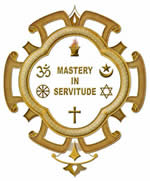 “In our church’s design, the circular shape of the visible sanctuary reflects the curvilinear form of the emblem of our founder, Meher Baba.Like God, the circle has no beginning and no end. This expresses eternity, the eternal life in God the infinite. The circle is also recognized as a symbol of unity since all points on the circle are equidistant from the center, as all beings are in relation to God. This symbol embodies our belief in the essential unity of Creation and the Universal Love at the heart of all life. Our gently sloping domes also reflect this important symbol of the circle and the … uplifting interior spaces created by a dome awaken the heart for prayer, meditation and communion with God.
“In our church’s design, the circular shape of the visible sanctuary reflects the curvilinear form of the emblem of our founder, Meher Baba.Like God, the circle has no beginning and no end. This expresses eternity, the eternal life in God the infinite. The circle is also recognized as a symbol of unity since all points on the circle are equidistant from the center, as all beings are in relation to God. This symbol embodies our belief in the essential unity of Creation and the Universal Love at the heart of all life. Our gently sloping domes also reflect this important symbol of the circle and the … uplifting interior spaces created by a dome awaken the heart for prayer, meditation and communion with God.
“Our sanctuary will be clad in soft white marble… the color which symbolizes purity, unity and inclusiveness. This is suggested by the rainbow, whose colors blend together to produce white light. Although there are widely diverse streams of life in Creation, the color white represents our belief in their essential oneness.
“It is a tenet of our faith that when we come together to worship and glorify God in our Sanctuary, with the Prayer Hall at its sacred center, the atmosphere of the building is charged with the force of divine radiance, love and grace. Episcopalians say that in such a space “our souls go deep into the rivers of the Spirit.” In summary, members of Sufism Reoriented believe that on this marvelous journey toward Beloved God, sacred external structures are critical to support the internal processes of spiritual growth."
– Murshida Carol Conner
Loel Bartlett Miller, Board Member of the IFCCCC and ICP
You also might want to see the entries in the Interfaith Design Competition, sponsored by ICP in 2004, which reflect various approaches to Sacred Design. [Ed.]
ICP and Veterans
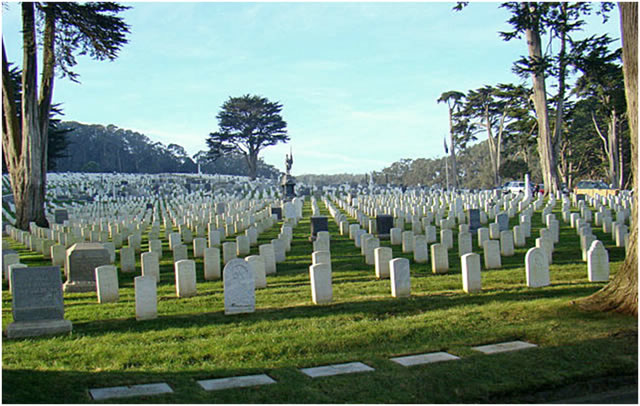 The Interfaith Center at the Presidio is located in the beautiful and historic Main Post Chapel of the Presidio, adjacent to the National Cemetery, Golden Gate Club, and Main Post area of this military base turned into an urban National Park. Since its historic purpose was as an interfaith spiritual center for the military, it is appropriate that the Interfaith Center at the Presidio has renewed its commitment to returning military veterans and their families. Since its inception, it hosted an interfaith service after the well-attended Memorial Day event at the National Cemetery, but this year it added ICP participation in the ceremony at the Cemetery, hosted a reception presenting a half dozen groups that serve returning veterans, and an expanded interfaith service. An ICP board member also served as chaplain at the other annual event at the National Cemetery, the Wreaths across America project, December 10th.
The Interfaith Center at the Presidio is located in the beautiful and historic Main Post Chapel of the Presidio, adjacent to the National Cemetery, Golden Gate Club, and Main Post area of this military base turned into an urban National Park. Since its historic purpose was as an interfaith spiritual center for the military, it is appropriate that the Interfaith Center at the Presidio has renewed its commitment to returning military veterans and their families. Since its inception, it hosted an interfaith service after the well-attended Memorial Day event at the National Cemetery, but this year it added ICP participation in the ceremony at the Cemetery, hosted a reception presenting a half dozen groups that serve returning veterans, and an expanded interfaith service. An ICP board member also served as chaplain at the other annual event at the National Cemetery, the Wreaths across America project, December 10th.
These words from the ICP chaplain at the two Presidio Cemetery events in 2010, from his recent Invocation, convey our hopes for the interfaith community throughout the Bay area:
“The prophets of your spirit taught us that faith must be lived by making love real and practical to those who need it most. Our returning veterans need us, and we pledge ourselves to help them to be successes at home as they have been heroes at war.
Dear God of us all, and friends here, I lost a nephew this November who was a returned veteran from the front in Afghanistan. He came home wounded in spirit because comrades had died, and he took his own life. Like too many, it is too late for us to help him to heal, but I hope by honoring his memory on this occasion, you, God, can help me to inspire the people here to reach out to the returning veterans they know or could know, and to help those veterans to find peace at home, to get the jobs and educations they deserve, and to help our country to flourish through many years of peace. This occasion, and its partner Wreaths across America are an important way to remember and to honor our fallen veterans, and we are grateful for all who have helped in this worthy effort, but we know that our patriotic duty and our sacred faiths demand more of us, to serve the living at least as well as we honor the dead. May we all grow in your service and together build a generation of peace. Amen and Blessed Be!”
ICP’s future plans in support of veterans include providing on its website helpful information to the spiritual communities of the greater Bay area as resources to help them to welcome, support, and integrate returning veterans and their families into their congregations. It is also ICP’s intention to establish an Interfaith House of Peace and Reconciliation since we realize that the wounds of war impact not only the 1% of Americans who serve in the military and their families, but the 99% who are civilians. It is ICP’s intention to co-sponsor future events throughout the Bay area in support of the success and effectiveness of this work.

